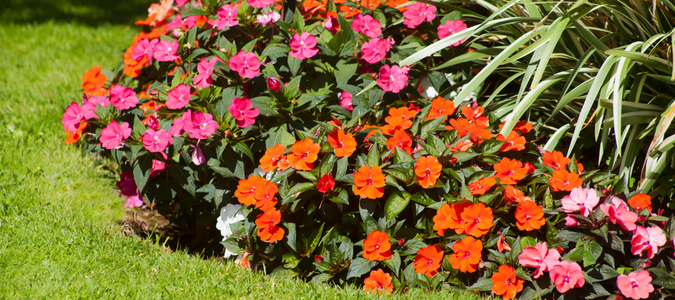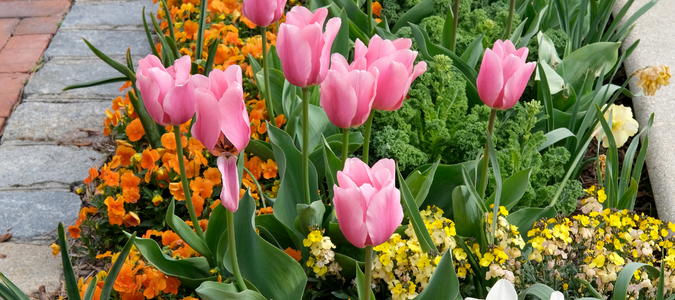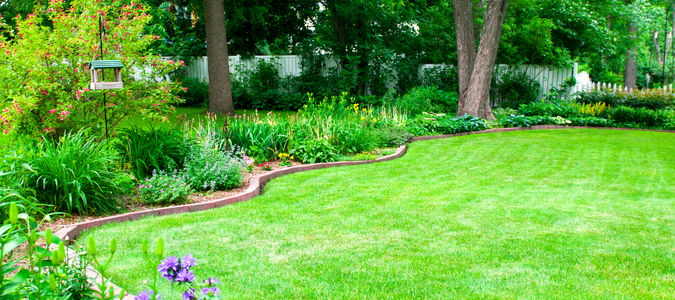Spring is coming, so it’s time to start thinking about springtime gardens. Whether you are a seasoned green thumb or a flower newbie, building your own flower bed is not too difficult.
There are several types of flower beds, and creating your own ensures that you get exactly what you want that will fit your lawn.
Flower beds require routine maintenance before and after you build them. Keeping them tidy is important to discourage weed growth and help your flowers thrive.
Finally, front lawn flower beds add curb appeal and make your home feel more inviting. There are several ways to spruce up your front lawn with flower beds, from ring-shaped beds around your trees to flower beds along your walkway.
Keep reading to learn how to build and care for a flower bed. For the best outcome, contact a landscaping specialist. They have the knowledge to advise you on which plants will work best for your yard and can also do all the hard work for you.
How to Build a Flower Bed
Building your own flower bed allows you to have complete customization so that your bed fits perfectly in your garden space or lawn. Building flower beds is not that difficult and does not require too many tools. Once the bed is established, it becomes a blank canvas for you to plant any flower you want.
Before we go over the process, let’s look at the different flower bed types and shapes you could build.
Border Bed
Most flower beds are border beds that gently curve around the exterior of a home or building. They can also border a fence, walkway or hedge. They add curb appeal and welcome guests by making the home look more inviting.
Border flower beds are viewed from the front, and the plants are arranged with the tallest plants in the back and shorter plants in the front. You can leave the curve as is or add an edging to create more definition. Edge options include stone steel, and composite edges.
Island Bed
The other type of flower bed is the island bed. Instead of bordering a structure, island flower beds stand alone. They are often placed in the middle of a lawn to add visual appeal and can be viewed from all sides.
Island flower beds can be circular, square, rectangular or any other shape. The plants are arranged with the tallest ones in the middle and the shorter ones on the outer edges. Another way to use an island flower bed is to create a ring-shaped flower garden around the base of your trees.
Raised Bed
The other common type of flower bed is the raised bed. They are often built in boxes and raised off the earth. Raised beds are a great option if you do not have much lawn space or your land doesn’t have the right conditions to grow what you want.
What To Know Before You Build a Flower Bed
Before you build your flower bed, you must decide where it will go. If you are building a flower bed on your grass, start by digging up the existing grass with a shovel. Next, cover the turf with a few newspaper sheets and add a thick layer of soil. Top it off with a layer of compost.
If you are building your flower bed on concrete, add landscape fabric before adding the soil and compost. You could also use a plastic sheet or plywood to protect the concrete.
Finally, if you decide to edge your flower beds, add the edging at this stage. Once added, you are ready to plant your flowers in your new flower bed.
Need help building your flower bed? Contact a landscape design specialist today for expert tips and guidance.
Keeping Up With Flower Bed Maintenance
You need to do some routine maintenance before you build your own flower bed. For example, you need to remove all the current vegetation where you want to put your bed. There are two ways to do this depending on the season you build your bed.
If you build your bed in the fall, laying down four or five layers of black and white newspapers under your soil and compost will do the trick. The newspaper blocks out light and kills vegetation over time until you are ready to plant in the spring. It also decomposes and adds a layer of compost to your soil.
If you want to build your flower bed in the spring and plant immediately, use an herbicide to kill the existing vegetation before laying down your soil.
After building your flower bed, you can enjoy the beautiful site. However, you need to remember a few required maintenance routines to keep it healthy and happy.
Taking Care of Your Flower Bed
First, it is important to mulch your garden to control weeds and help with moisture retention. How often you need to use mulch will depend on your climate, soil type and what you are growing. Most lawn care specialists recommend mulching only once or twice per year.
You should apply mulch when you first plant your garden. Water the flowers thoroughly and then add two to three inches of high-quality mulch.
Next, finding the right water schedule for your flower beds is important. Your schedule will depend on which types of flowers you plant and the climate where you live.
You should also stay on top of weed growth so that weeds do not overtake your garden. Keeping the edges of your flower beds trimmed and tidy will discourage weed growth. Adding stone, steel or composite edges to the border of your beds can also help.
When you mow your lawn, ensure grass clippings do not end up in your garden because they can germinate and you can end up with grass in your flower beds.
Hand-pulling young weeds can be an effective way to stop them from establishing roots in your soil. However, you must make sure you pull out the entire root system, or it will grow back.
For more mature weeds, use tools like a weeding fork, garden knife, hoe or trowel. Weeds are easier to pull out when the soil is moist, so plan to water your garden the morning before weed-pulling day.
Caring for your flowers, keeping your flower beds tidy and controlling weeds will go a long way in maintaining a healthy flower bed. For a customized flower bed care schedule, contact a lawn care specialist. They can set up a regular maintenance schedule so your flower bed remains beautiful year-round.
The Best Front Yard Flower Bed Ideas
There are endless front yard flower bed ideas. It is important to consider what type of flowers you want to grow, the shape of your beds and the amount of sunlight exposure.
Before you decide what to grow, consider the maintenance level you desire. Do you want a garden that is easy to upkeep or requires daily maintenance? Next, research which flowers grow in your area that matches what you want.
Perennials like Shasta daisies, cone flowers, hibiscus, geraniums and ferns are famously low-maintenance flower bed options.
Next, determine the shape of your flower bed and where you want to put it. Border flower beds around your home are common and beautiful. You could also get more creative and plant flower beds along your walkway so that it is bordered with flowers. Adding flower beds around the base of your front lawn trees also adds a nice pop of color.
You can also add unique elements to your flower beds, like an outdoor bench, a water feature or a stone path. Add trellises to your flower beds if you want to grow plants upwards.
You can grow more than flowers in a flower bed. Adding shrubs, bushes or edible plants adds texture and intrigue to a front lawn garden. Planting tall shrubs can also add privacy to your home. Butterfly bush, elderberry, lilac and arborvitae shrubs all grow tall quickly.
For more front lawn flower bed ideas, contact a landscaping specialist. They can advise you on what will grow well in your soil and create the visual effect you want.
ABC Can Help You Create the Yard of Your Dreams
As a homeowner, there are so many things you have to stay on top of, and the laundry list of tasks never seems to get any shorter. ABC Home & Commercial Services can make it so you have one less thing to worry about. We can take on all your lawn care needs without you having to lift a finger. Our pros can do it all, even recommending drought-tolerant plants, so your yard stays vibrant through dry periods.



